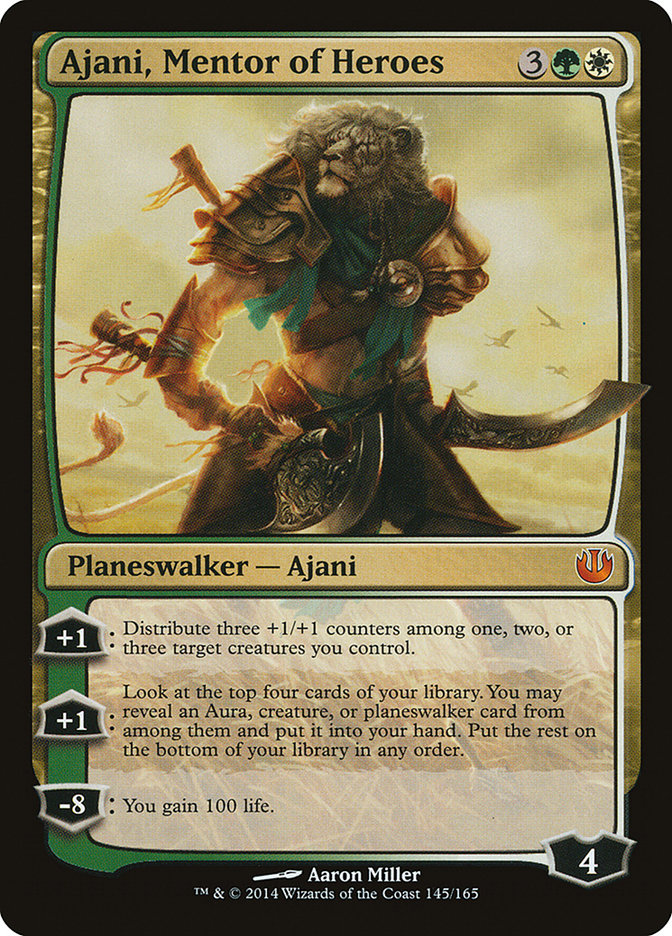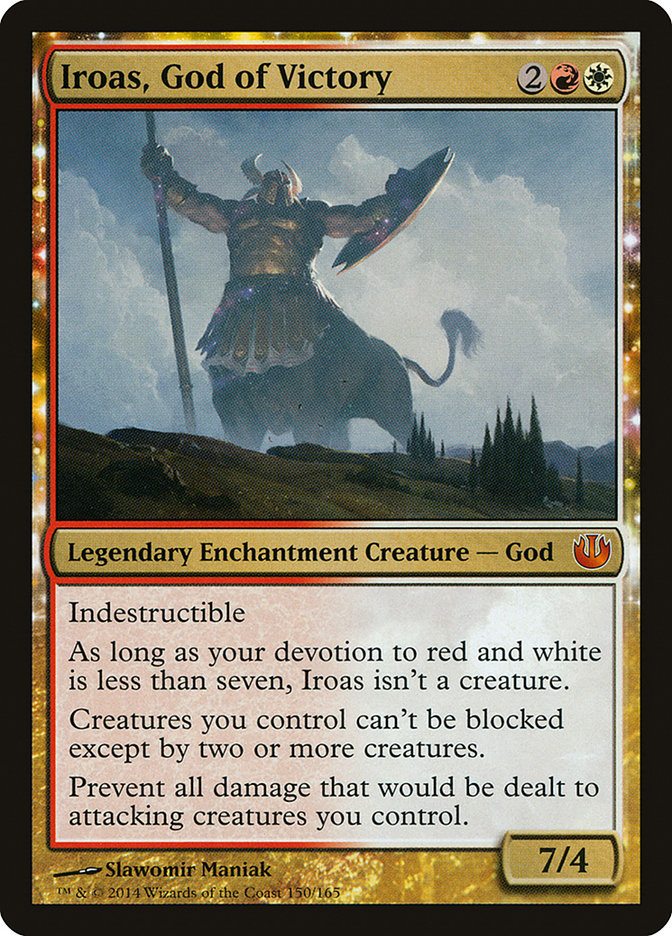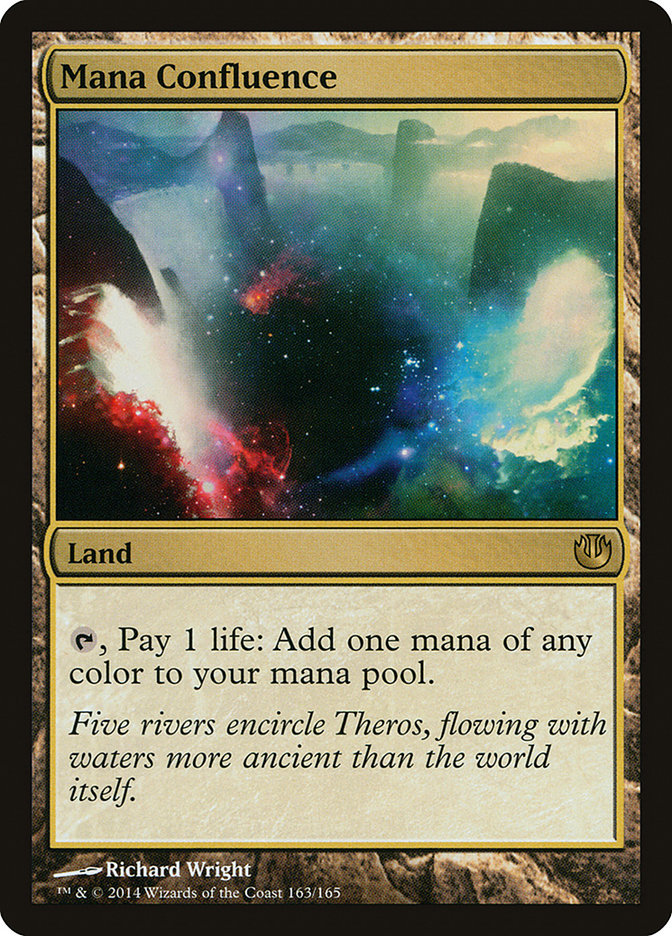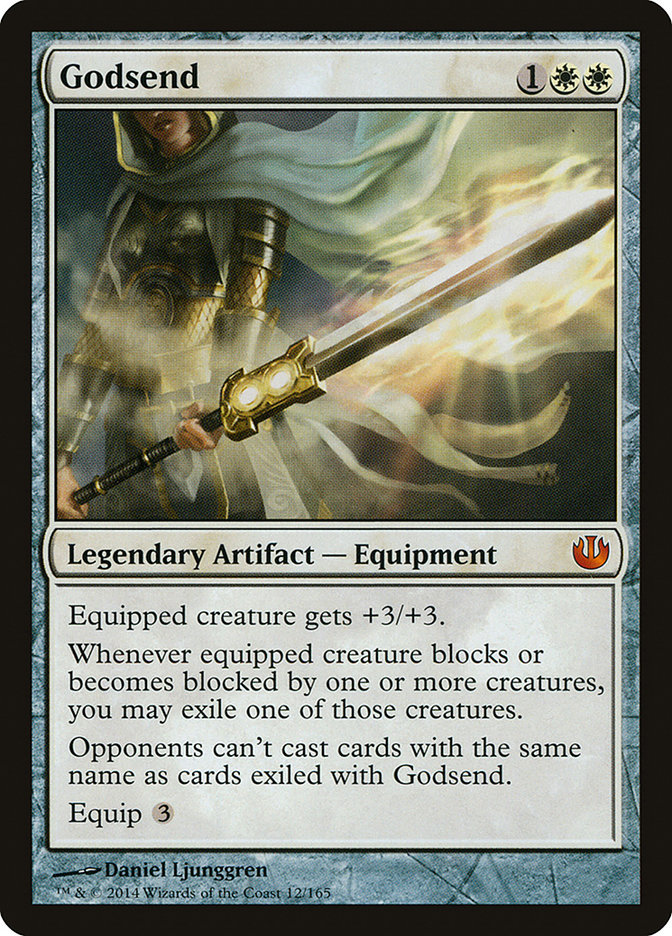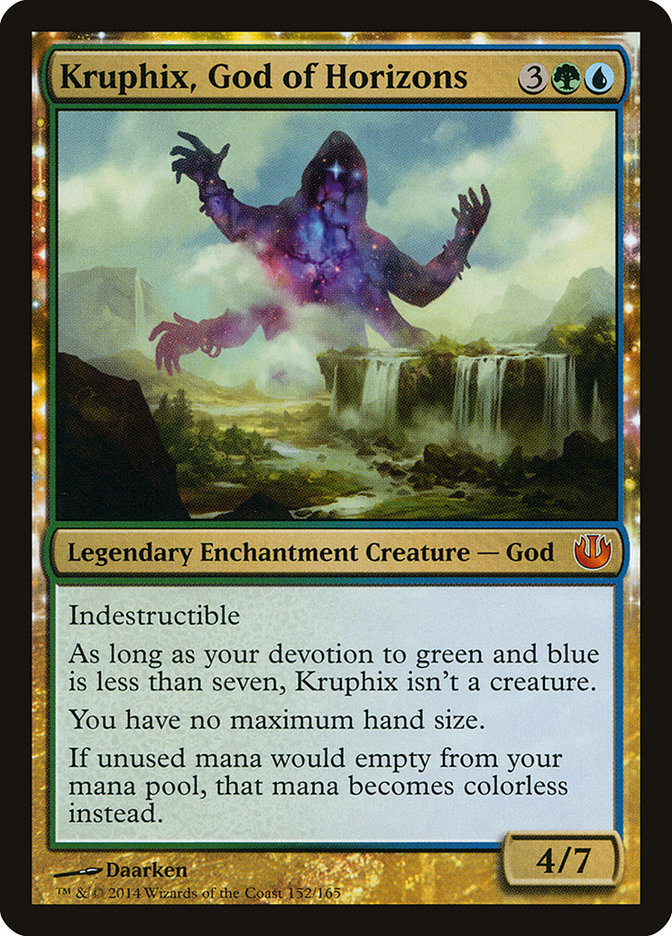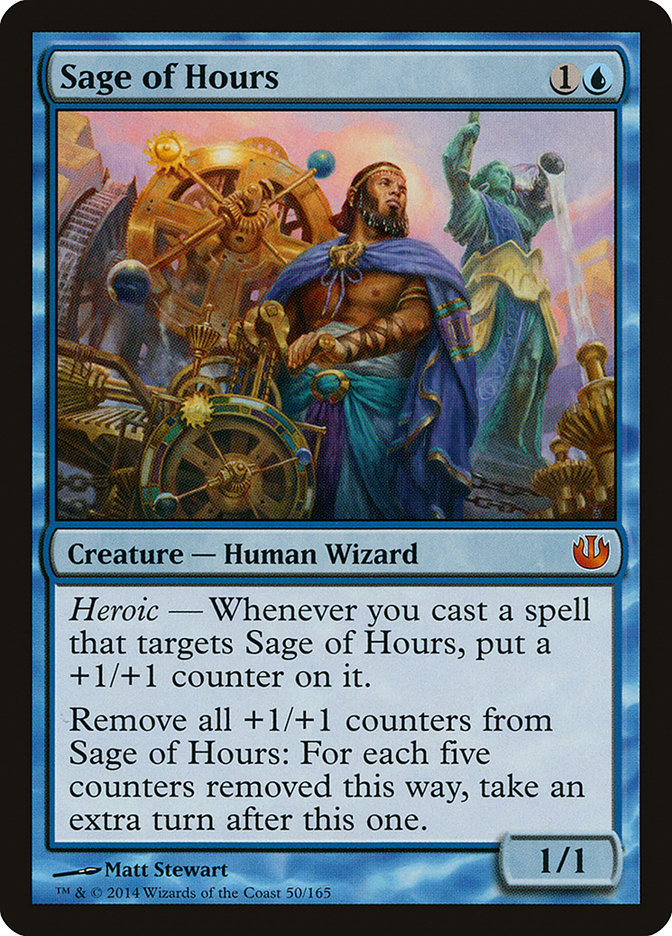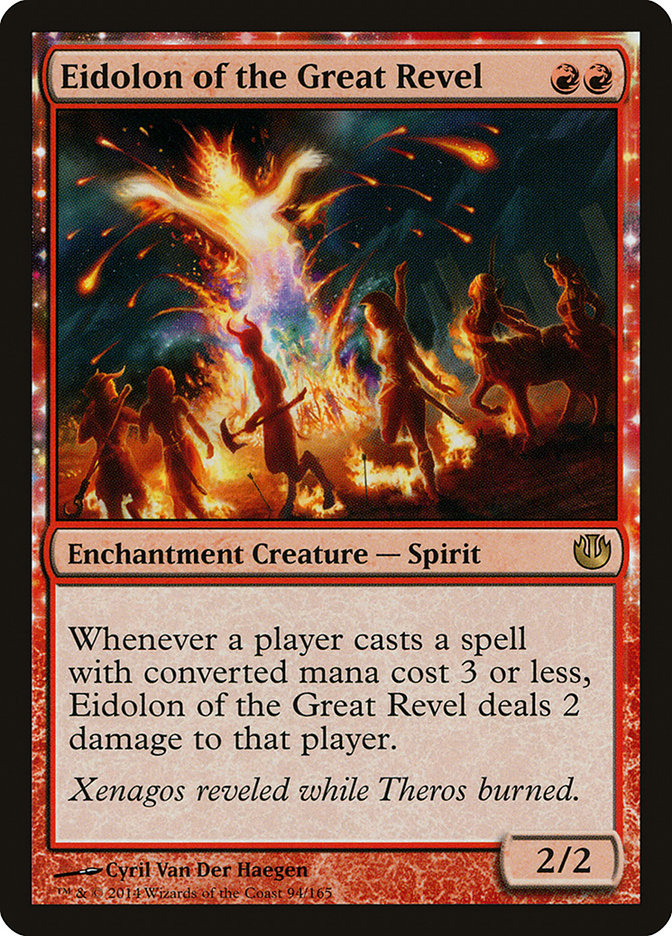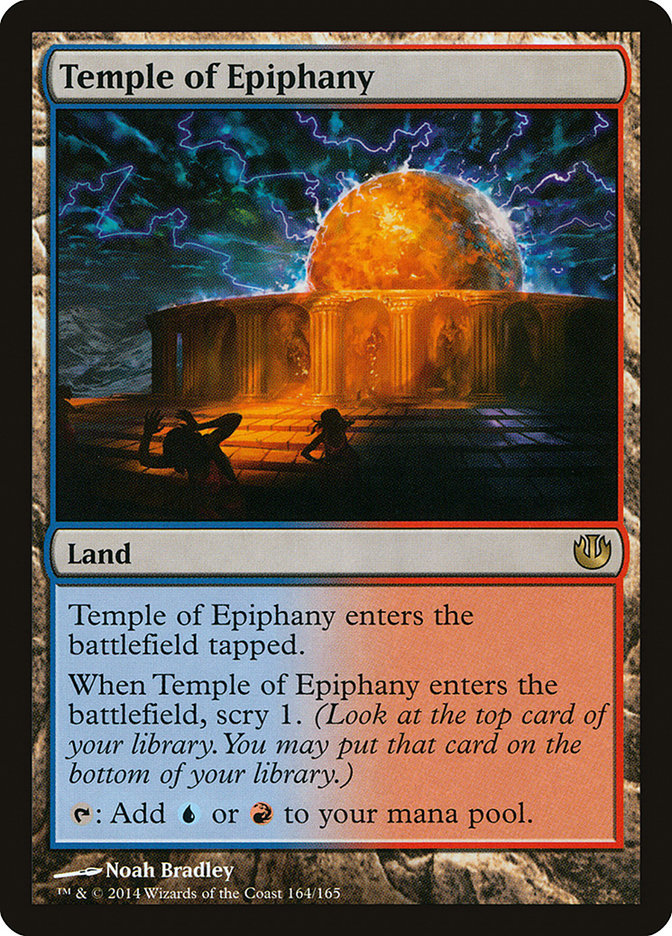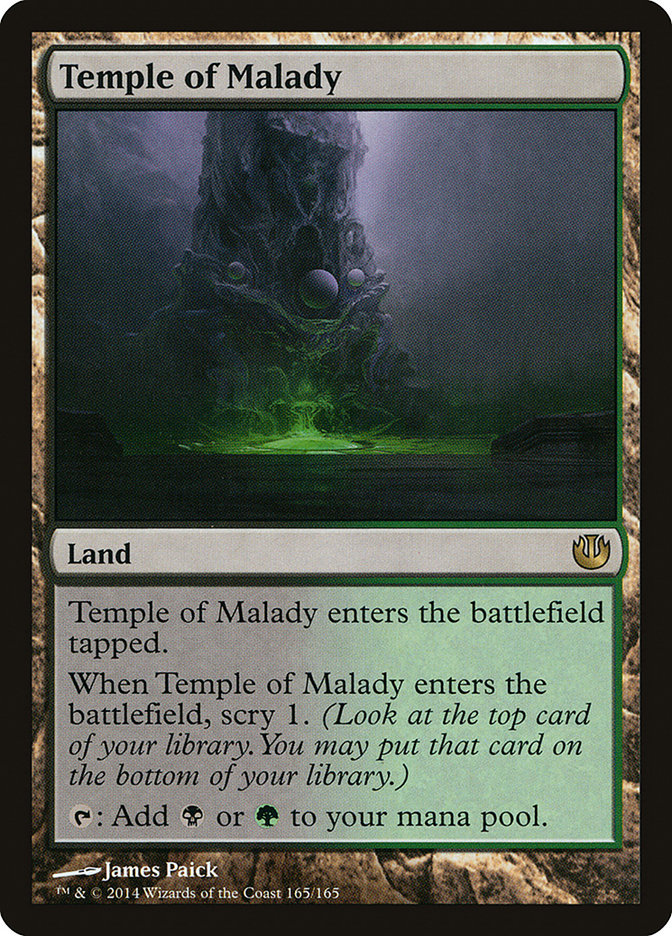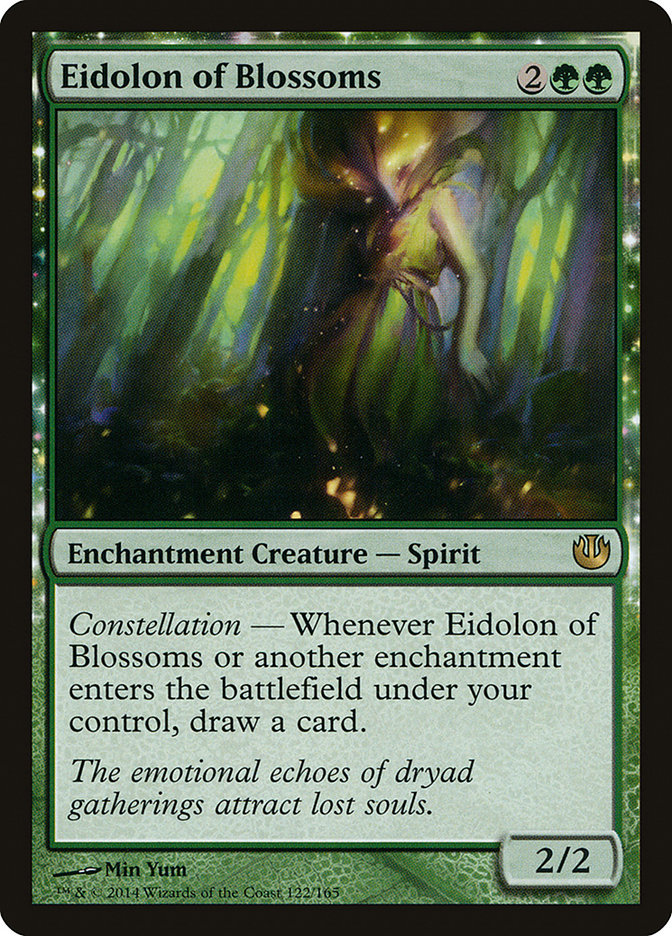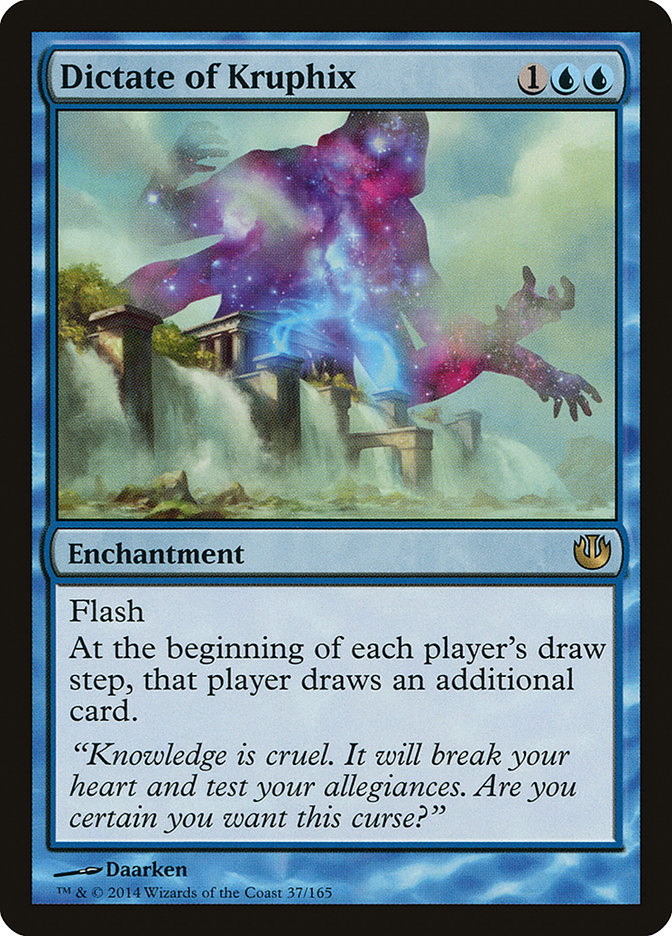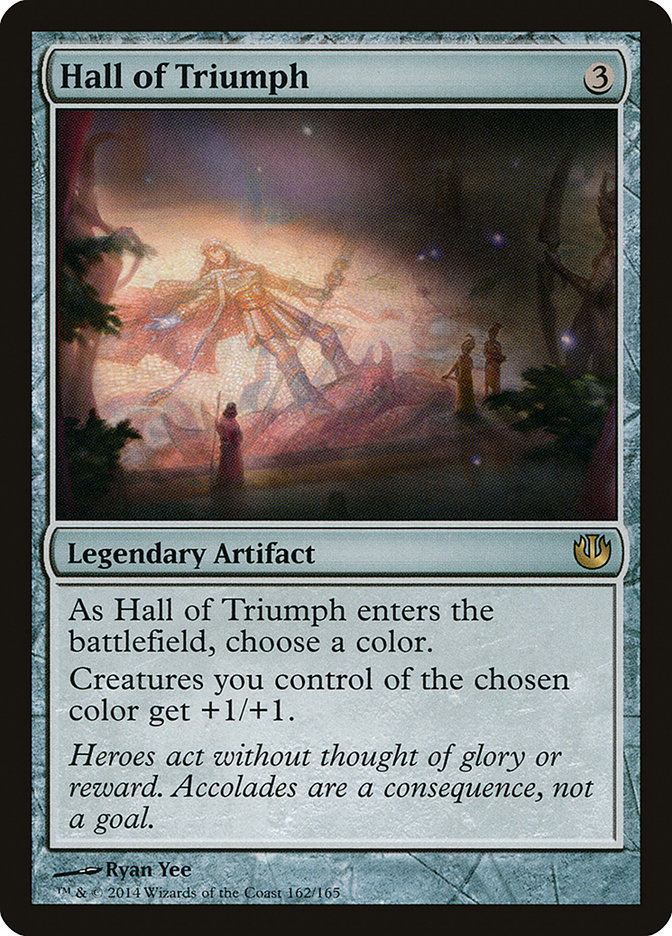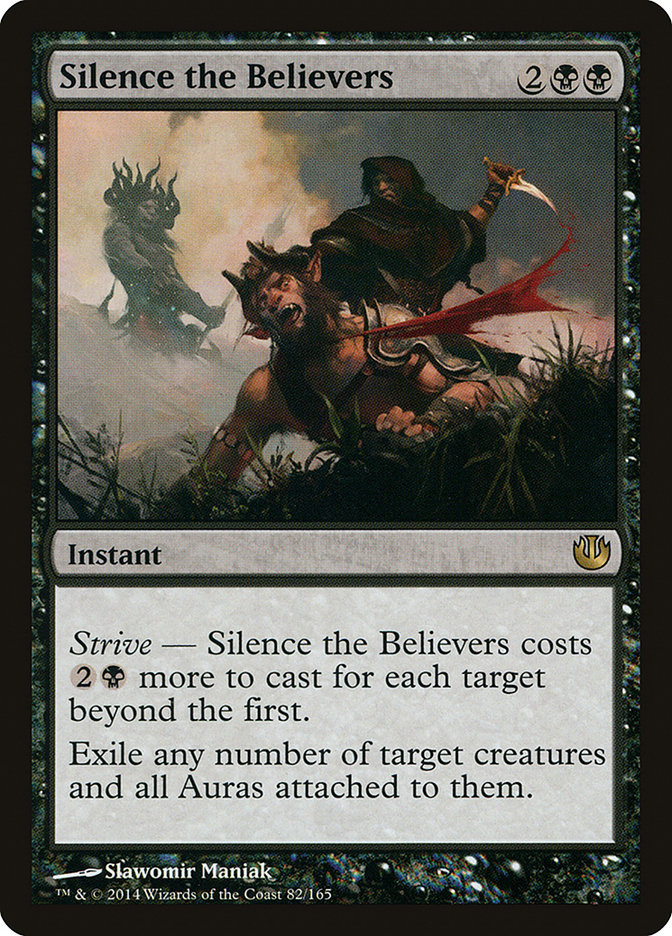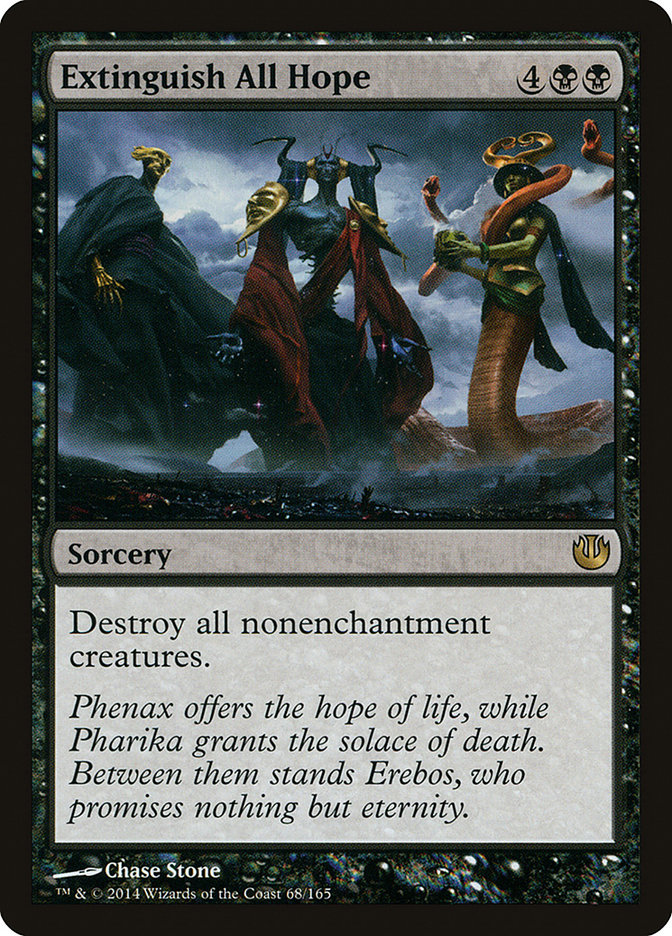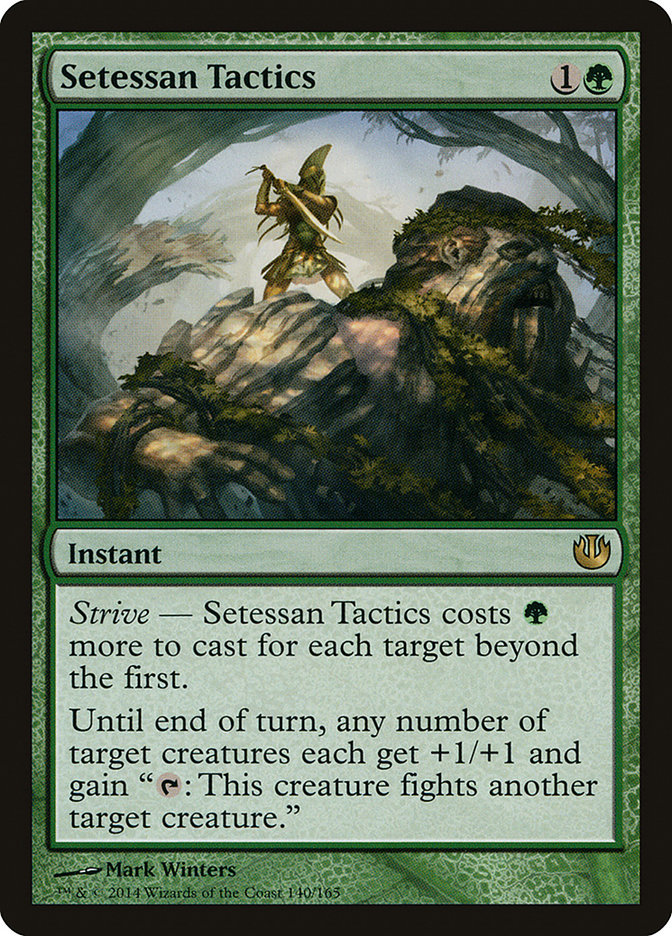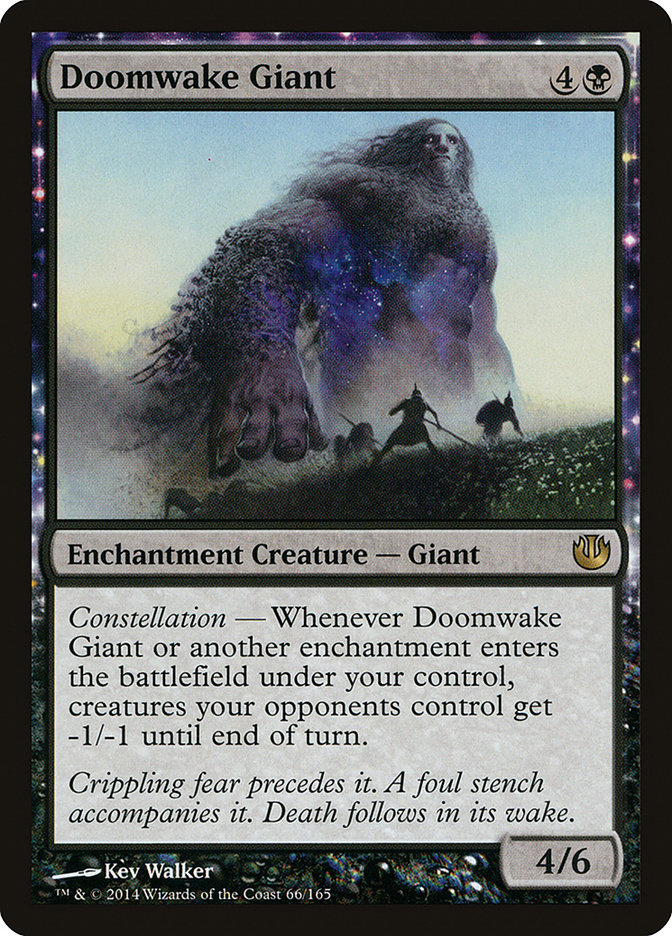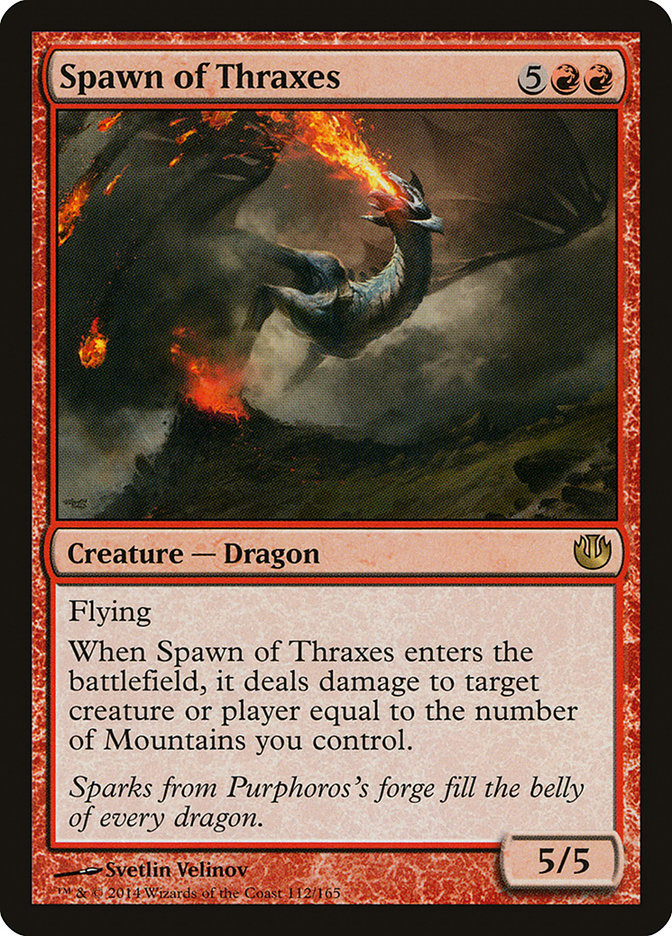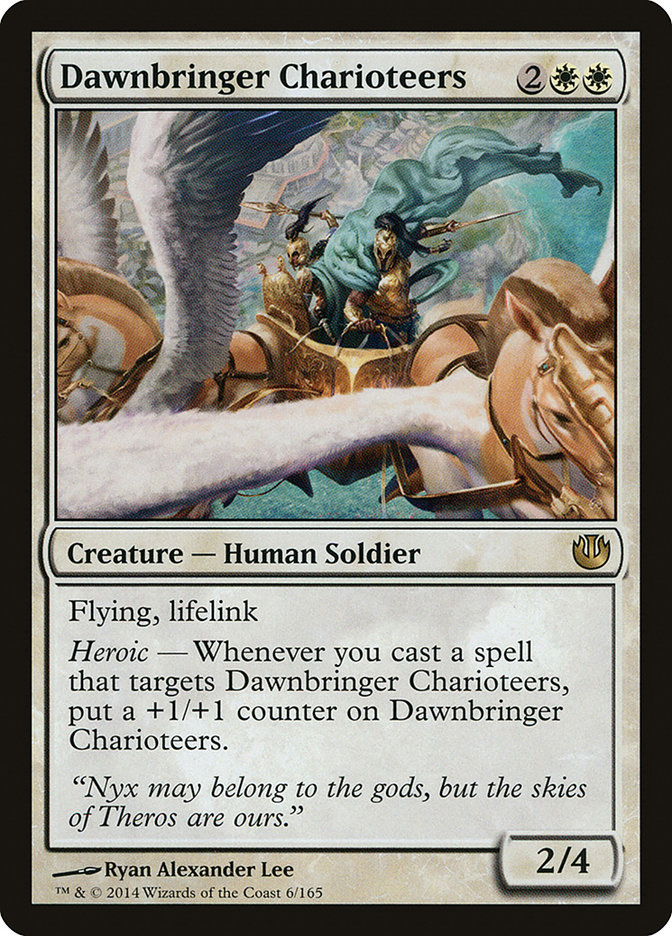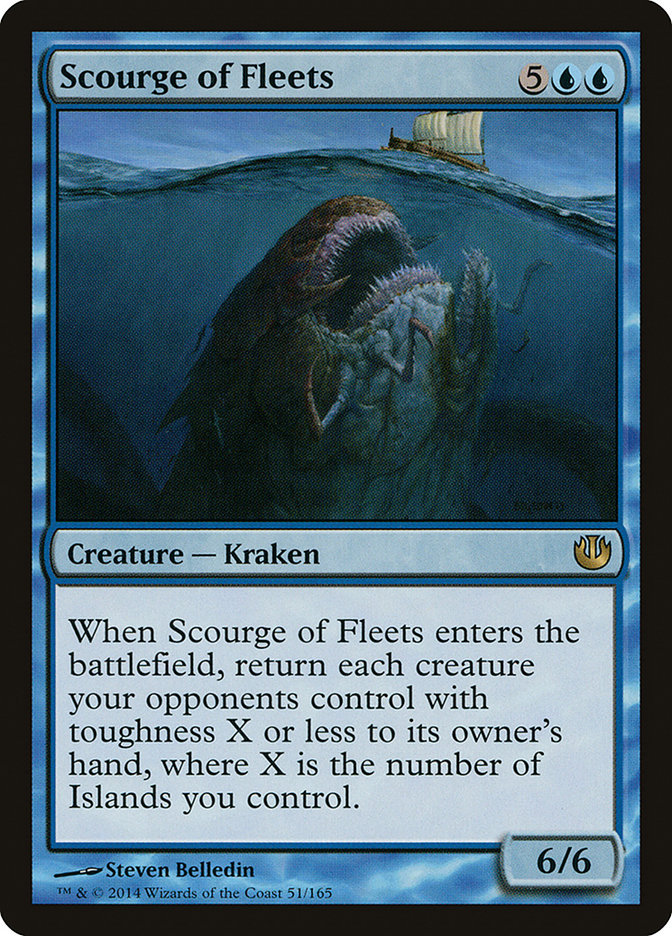I used to believe in a Magic finance rule that I called the Spring Set Theory. It stated that third sets had by far the best opportunities for buying in early for three main reasons:
- Availability. There are only about three months of drafting the spring set (usually at one pack each) compared to six months of drafting the winter set and ten months of drafting the fall set (including four months at three packs each). People also tend to get bored of the latest block by the time the third set comes out, causing tournament and Prerelease attendance to drop.
- Power level. Spring set cards are in Standard for a significantly less time than cards from the fall set, and they only have a few months of shared time with the previous block. If WotC is going to print a card that might break the format, I’d expect them to take that risk in the spring. Spring sets are also where WotC has to reach a little more to make the fall mechanics feel fresh, which sometimes leads to overly splashy design choices like Phyrexian mana.
- Price memory and excitement level. It’s no secret that people are most excited about new things. In the fall and winter preorder hype can be uncontrollable, and initial prices are artificially high. By the time spring rolls around, people are less excited about the block and feel a little burned at buying in too early on the last couple sets. This keeps the initial prices to a more reasonable level, which means that more cards will rise in price.
Theros is the sixth block released since the advent of the mythic rare changed the finance scene completely. The first block, Shards of Alara, did not follow the Spring Set Theory. While many Alara Reborn cards have a ton of value now mostly due to casual demand, the set was a bit of a disappointment at release.
The next three spring sets however—Rise of the Eldrazi, New Phyrexia, and Avacyn Restored—embodied my theory perfectly. Sensing a pattern, I urged people to buy as many Dragon’s Maze singles as they could.
Other than Voice of Resurgence, it did not go well. While I successfully predicted that you’d want to hold on to your copies of Voice and Blood Baron of Vizkopa while selling almost all the other overpriced mythics, my "hold" calls on Blood Scrivener at $8, Advent of the Wurm at $7, and Aetherling at $6 were massive busts. The set’s value never developed as I predicted, and by September I had to face facts. The Spring Set Theory is not true—at least not always.
What went wrong? My guess is some combination of the following:
- Heavy gold sets (like Alara Reborn and Dragon’s Maze) have lower short-term value because two- and three-color rares are much narrower—think about the number of people who need Obzedat, Ghost Council versus the number who need Thoughtseize. This keeps demand down relative to supply, which helps negate the normal spring price jump.
- Rise of the Eldrazi and Avacyn Restored were anomalies not because they were spring sets but because they were large spring sets. Even with three-pack drafting, supplies of these staples were simply too low.
- New Phyrexia was an exception as well because the leaked god book destroyed hype for the set and because Phyrexian mana was absurd.
- Modern interest has eaten into Standard demand a bit, causing prices to drop—or at least not rise—across the board.
- The number of casual/Limited Magic players has grown faster than the number of Standard players, helping alleviate demand for tournament chase rares.
- The Standard market has become more efficient thanks to a rise in online sites that allow people to sell and trade cards with greater ease.
- Dragon’s Maze simply wasn’t a very good set.
Based on this I have to believe that there may well be some form of spring set bump for Journey into Nyx, but it likely won’t be as big as the one from Rise of the Eldrazi, New Phyrexia, or Avacyn Restored. Let’s keep in mind the following as we dive into the first week of Journey into Nyx previews:
- Splashy powerful cards that require entirely new decks to be good are often the biggest traps. People enter Magical Christmas Land when looking at spoilers, and 90% of these cards will drop in price. It’s better to trade these all away at the Prerelease and miss out on the breakout card than get stuck holding a bunch of them when most of them drop in price.
- It’s very hard for a gold card in Standard to stay at or above $20 for long—Voice of Resurgence and Sphinx’s Revelation are the only two cards that have done it recently. Gold cards are so much narrower than monocolored cards that there is generally enough supply to fulfill demand as long as the set remains in print.
- Broad staples that go in many decks tend to be worth picking up early even at high prices. No one went broke preordering Snapcaster Mage, Mutavault, or Thoughtseize.
- Cards that fit into existing top decks tend to be relatively good buys.
- The top end of Standard right now is mostly just black versus blue with a little bit of Esper and G/R thrown in. For me to recommend a card that doesn’t fit into one of those archetypes, I have to really believe that it can shake up the format entirely.
- Most of the time it is not worth buying casual cards early on. Sure, Consuming Aberration is worth $3 now, but it was easily available at $0.50-$1 for months. Paying $2 at release was the wrong play because these cards almost always fall.
- All mythic rares are worth investigating in depth, especially cheap ones.
- If a set has a "sleeper" rare, it is usually a card with a cheap converted mana cost, potential broad appeal, and an awkward or hard to evaluate ability.
With that in mind, let’s take a look at the cards we know about so far! I’ll be reviewing all of the spoilers released between Monday, April 7 and Thursday, April 10 this week (with one notable exception), and I’ll hit the rest of the set next week.
Ajani, Mentor of Heroes – $30
Ajani will nearly always provide card advantage. His first +1 turns any stray creature into a threat, and his second will almost always draw a card. His ultimate (even though it’s kind of silly) will end the game more often than not. Ajani is also the first G/W walker ever printed, which should add to casual demand. He could also slot right into the Bant Walkers deck that already exists.
Ajani falls short due to his mana cost—high and narrow—and the fact that nothing he does is absurdly powerful on its own. You won’t be waking up at night in a cold sweat after seeing opposing Ajanis in your dreams because most of what he does is relatively fair and only one of his abilities actually impacts the board.
The best case scenario for Ajani is Kiora, the Crashing Wave, another narrow gold planeswalker that has held stable at $20 while seeing a little bit of play. The worst case is Ral Zarek, last spring’s gold planeswalker that still sells for $10. I predict that Ajani will stay high for a few months—probably in the $18-$25 range—before dropping toward $12 in the autumn when people start getting excited about the next block. I expect Ajani to be a fringe player in Standard.
Keranos, God of Storms – $20
I love that Keranos does not need any help to be good. He triggers once per turn every turn, and his ability is never useless. Given enough time Keranos will finish the game by himself even if he never turns into a creature. The board state is irrelevant.
Where Keranos falls short is in the upper right-hand corner. You need both blue and red to play him, which means that he does not fit in any of the best existing decks. He also costs five, and unless you already have devotion out, he’s not going to do anything when he hits play. Three damage isn’t enough to take out most of the format’s threats either.
A realistic comparison for Keranos is Xenagos, God of Revels, who was easily the most hyped God just three months ago. You can pick him up for $12 now even though he sees play in many builds of the G/R Monsters deck. Even if hype drives Keranos up to $25 between now and release, I think you’ll be able to pick him up in the $12-$15 range before long. It would take a Modern deck or a tier 1 Standard deck utilizing three or four copies of him to keep him in the $20-$30 bracket all summer, and I don’t see it.
Iroas, God of Victory – $20
Is it finally Boros’ turn to be good again?
In terms of raw power, Iroas is the real deal. Remember, Pyreheart Wolf was a Standard staple for a while, and that guy only cost one white mana less than Iroas. Chained to the Rocks still exists. So does Boros Reckoner, even though that guy doesn’t play very well with Iroas’ second ability. Iroas doesn’t help Boros fight against control very much, but it’s certainly a game changer against other creature-based decks.
If Boros puts up results early, this is the sort of card I could see hitting $30 or $35 temporarily as people scramble to buy in. Over the next few months, though, that deck would have to consistently be the best in the format for a price tag higher than $20 to stick. I’m also not convinced this card is a four-of in the decks that run it; Patrick Chapin outlined a few good possibilities, and all of them just used Iroas as a two-of. That tells me that this is more of an $8-$10 card long term.
Mana Confluence – $20
So yeah, the price on this seems kind of absurd. Is Mana Confluence really the Snapcaster Mage of Theros block? Even though this card came out after my cutoff, I decided to write about it now.
First of all, it’s worth reminding yourself that this is a multi-format staple that will for sure see play in Standard, Legacy, and Modern. That’s why people are willing to pay $20 for it right now. If you want to preorder the one Journey into Nyx card that will be a guaranteed playable for the next five years, this is it.
Is $20 to much to pay right now though? Sure, it’s strictly better than City of Brass in most Legacy decks, but the difference is very minor and is mostly limited to a couple of Rishadan Port triggers every few events. The most serious Legacy players will certainly swap out their copies, but I’d imagine most people will trade for their copies of Mana Confluence at their leisure and upgrade when it makes sense. I suppose some decks can now run five to eight copies of this effect, but I don’t think that is going to be a common occurrence.
In Modern City of Brass shows up as a one-of in some builds of Affinity and Ad Nauseum. The card is a relative non-factor in Magic’s fastest-growing format, and I don’t expect Mana Confluence to change that.
How big an impact will Mana Confluence make on Standard? Well, it’s not very good in control decks, and the monocolored aggro decks aren’t going to want it either. It should help two- and three-color aggro decks out though, which means that at best it will see play in a couple of the format’s tier 1 decks. Even still, a rare land from a spring set that’s played in multiple top decks is a solid $20 card most of the time.
I think that people hyping this card into oblivion are comparing it too much with Mutavault and not enough with Cavern of Souls. Mutavault is good in almost every deck, while Cavern was only good in a few specific top builds. Mutavault preordered at $15 and currently sells for $40. Cavern of Souls started at $25 and stayed there for a while before slowly dropping—you could pick them up at $15 last summer, and they’re just $20 now.
I doubt Mana Confluence has much room to grow over the short term, but it won’t fall much either. A solid land from a spring set is unlikely to crater unless it sees no play, which is not going to happen. I won’t be shocked if it hits $15 this summer, but if the top decks this fall need four copies, it could hit $25 or even $30. I hesitate to call this a buy at $20 because that still seems kind of silly to me, but the more I think about it, the less crazy the price actually seems. If you need these for Standard, feel free to get them now. Just don’t expect to play it in Modern.
Godsend – $15
Godsend is amazingly flavorful, but it’s kind of cumbersome to read. Just to clear up any confusion, Godsend allows you to exile any one blocker or blocked creature that’s interacting with the equipped creature after declare blockers and before damage. Not only is it nearly impossible to block anything wielding this, but if you stick it on a random creature, you can basically shut down your opponent’s big lumbering attackers. The quick and dirty templating effectively reads as such:
Godsend – 1WW
Equip 3.
Equipped creature gets +3/+3 and is unblockable unless your opponent has a ton of blockers or really doesn’t want to take damage this turn.
Target opponent sacrifices their best attacking creature every time they attack. They can’t play any other creature with the same name as a creature sacrificed this way.
It’s also worth noting that Godsend does not double trigger with double strike. It also cannot permanently exile commanders—going to the command zone is a replacement effect.
I expect Godsend to be a very popular casual card. High-end equipment is always well liked, and Godsend is the perfect Commander rattlesnake, especially on a vigilant creature. In terms of Standard play, I’m just not sure this is fast enough. White-based aggro decks might want a couple of these, but the card isn’t very good in many matchups. If you want to stop people from blocking your guys, Iroas is better.
It is pretty good against Gods, so if the format starts to revolve around those this could see an uptick. I expect this to see some sideboard play in Standard (maybe a two-of in the main of a Brimaz, King of Oreskos deck) and perhaps sideboard play as a one-of in a Stoneforge Mystic based Legacy deck, but I doubt this will become a new format staple. Even still, I expect casual demand to keep this in the $8-$10 range.
Kruphix, God of Horizons – $12
Kruphix was designed with Commander in mind, and he will certainly be a big hit on the kitchen table. He’s kind of a combination of Omnath, Locus of Mana (up to $10 now) and Reliquary Tower, a staple of the format since its printing. Tack on the indestructability and general eligibility and I have no doubt this card will be very popular with the 100-card crew. I know that I personally will need at least two or three of them for existing decks of mine.
Value-wise I can’t see this card retaining its $12 price tag for long. Ben Bleiweiss pegged it as the last two-color God on the totem pole, which could be true over the next year or so. Progenitor Mimic is just as much of a Simic Commander staple, and you can still pick those up for $4. Long term however I wouldn’t be shocked if Kuphrix ends up as one of the two or three most valuable Gods, stabilizing between $10 and $15 in a couple of years. Even if you agree with me on that, though, pick these up at $4-$5 in the fall, not at $12 now.
Sage of Hours – $6
I hated this card . . . for about twenty seconds until I realized that you can load it up with counters any way you want to. Don’t let the casting cost fool you—this is just as much of a Simic card as Kuphrix is, if not more so. Vorel of the Hull Clade, Forgotten Ancient, Doubling Season—there are so many ways to go infinite with this in Commander that it is pretty close to a kill on sight. Johnnys all over the world will be trading for these.
Long term Sage of Hours is likely a $10-$12 card. Check out Lighthouse Chronologist, a similar (but harder to abuse) card from Rise of the Eldrazi, which is currently selling for $10. My target buy-in price on Sage of Hours is $4, and I expect it’ll get that low a couple of times over the next few years. I also won’t be shocked if it stubbornly refuses to fall either though. Don’t sleep on this due to the lack of Standard playability.
Eidolon of the Great Revel – $6
Eidolon of the Great Revel is a very interesting card, and it’s worth discussing on a bunch of different levels.
First off, this is Legacy playable. Pyrostatic Pillar is already a solid card in that format, and there are times when you’d rather have that ability on a creature. This also allows players to jam eight copies of that ability in their sideboard against combo, though whether that’s actually good remains to be seen.
Second, this is the first Pyrostatic Pillar available in Modern. Mono-red isn’t much of a thing there right now, but this card is certainly worth considering in Magic’s fastest-growing format.
Third, this is certainly playable in Standard, though it doesn’t fully punish many of the better decks right now. It is likely to do more damage to you than your opponent in many situations, so you better be ahead on the board or have the match in hand when it comes down.
Fourth, the double red in the casting cost is not irrelevant. This gives Mono-Red Devotion another solid two-drop, and it plays well with Purphoros, God of the Forge and the Big Red creatures. It is possible that this will help revitalize that archetype.
Value wise this card could be held back significantly by its downside. Most casual players hate cards that cause them to take damage as well, and this is one of the most egregious recent offenders. Because Eidolon is at its best in hyperaggressive decks, you have to fully commit to your plan and take a few risks if you want to play it. It’s scary because once it hits the table you have no control over how much damage it deals to your opponent. All you can do is control how much damage it deals to you.
This is easily the card in the set with the most breakout potential so far, and I could see it impacting three different formats and spiking to $12-$15. I could also see it being a bust and only a fringe sideboard card in the Eternal formats, causing the value to drop toward $1-$2.
My verdict: if you are a red mage by trade and know that you want to use this, pick up a set now and don’t think twice about it. If you are a speculator, stay away for now and be prepared to move in if it starts to show up in winning decklists.
Temple of Epiphany & Temple of Malady – $6
One of my better Born of the Gods calls was telling people to pick the Temples up at $5—as I predicted, they went up. The future of these two cards depends entirely on which color combinations are popular next fall and how good the fixing is in that set. If we get fetch lands or something, these will probably stay in the $5-$8 range. If the fixing is poor, the best cards from this cycle could hit $15-$20. Regardless, you’re going to need these lands going forward, and $6 isn’t bad. Get them now.
Eidolon of Blossoms – $3
Two-mana Enchantresses: Argothian Enchantress
Three-mana Enchantresses: Verduran Enchantress, Mesa Enchantress
Four-mana Enchantresses: Eidolon of Blossoms
That’s a brutal curve, and it doesn’t bode well for Eidolon of Blossoms’ chance at seeing much competitive play. That said, Eidolon of Blossoms exists at the best time for Enchantresses ever, and people are going to do what they can to make this deck work. The excitement has even caused Mana Bloom to rise above bulk level. Eidolon of Blossoms also does something that makes the other Enchantresses super jealous—she draws a card right when she comes into play. That has to be worth an extra mana or two, right?
Thanks to casual demand, the floor on this card is probably $1.50-$2, but the ceiling is fairly high. Even if the deck is tier 2, the Friday Night Magic crowd should be willing to pay $4-$5 for these as the deck’s flagship rare. I’m not buying at $3, but I’ll be happy to trade for them at that rate at the Prerelease.
Dictate of Kruphix – $3
The $3 cost on this card feels fairly optimistic to me. Howling Mines generally slot in around that number after a while, and this one does have flash. But there are very few competitive applications here, and the double blue in the casting cost is a real stumbling block. $3 is a fine price in a year or two when this is out of print, but the market is about to be flooded with these. There simply isn’t that much real demand for this kind of ability. I’ll be shocked if this doesn’t drop to $1 before long.
Hall of Triumph – $2
It’s been a long time since I’ve seen Glorious Anthem outside of Cube, but this is certainly the most versatile one ever printed. White, green, and black already have these, and blue doesn’t really want it. But this should be pretty good in some casual red decks, and it might even see a little bit of Standard play. I think this card will be easy enough to snag at $1 retail before long, and it should be a decent long-term casual hold.
Worst Fears – $2
I can certainly see why this card isn’t causing much excitement. Mindslaver was a bust last time it was Standard legal, and that card was easier to play and easier to abuse. $2 for any mythic warrants a second look though, and it is worth noting that mono-black is quite good right now and that deck can certainly generate a lot of mana if it wants to.
The bigger problem is that stealing someone’s turn does not always mean game over. There’s only so much you can do against many common board states. This card is probably closer to playable than you think. I could see it showing up as a two-of in some sideboards, but I doubt it’s a sleeper hit waiting to happen. There’s a small chance that this will settle in at $4-$5, but the odds of that happening aren’t good enough for me to recommend a buy.
Silence the Believers – $1.50
Most of the time Hero’s Downfall is going to be better than Silence the Believers. Even still, I wouldn’t totally discount this—two-for-ones are always worth thinking about, and some of the black decks out there right now can generate a lot of mana fairly quickly. The flexibility to kill pretty much any creature on turn 4 and while ramping up on turn 7 isn’t bad. Where this really shines is as a way to destroy opposing Gods, which is mostly an answer to a problem that doesn’t really exist right now. If God versus God battles were a little more common, this might be a good sideboard option. If Standard continues the way it has, though, this is a $0.50 bulk rare. My prediction is that this drops to $0.50, but there’s a small chance it will be a $2 sideboard staple or maindeck two-of.
Dictate of the Twin Gods – $1
This is a pretty cool Furnace of Rath, especially because you can flash it into play and win games out of nowhere. I don’t know if red decks want a finisher like that instead of something like Stormbreath Dragon that doesn’t require a heavy board presence already, but I wouldn’t be shocked if this saw some play in creature-based red or Boros decks. If so, this could stabilize at $2-$3. If not, this will be bulk in a month or two. It’s fine to pick these up now if you think you’ll use it.
Extinguish All Hope – $1
Sweepers are infinitely harder to make work in your favor the more they cost, and this one even leaves stray Thassa, God of the Sea behind for your opponent to keep. This would be cool if it made sense to build a deck around a bunch of different Gods, but that deck would be awful. This is a bulk rare unless some sort of black bestow deck becomes a thing. I can’t see it.
Setessan Tactics – $1
If heroic was more of a Constructed-playable mechanic, I’d be more bullish on this card. As it is, most decks would rather play a spell to bounce or kill their opponent’s creatures than try to rely on fighting them. This might see play in a few sideboards, but it’s likely a future bulk rare.
Doomwake Giant – $1
Future bulk rare, though it is potentially good with Heliod, God of the Sun and it might combine well with a card we haven’t seen yet. If this cost four mana, I could see a fun tier 2 combo deck built around it. At five, the hurdles are too huge to overcome.
Spawn of Thraxes – $1
Perhaps Valakut, the Molten Pinnacle decks in Modern could run a reanimation component and abuse this? Nah. Future bulk rare.
Heroes’ Bane – $1
I feel like we’ve had this card in every set for the past three years, but Gatherer tells me that I’m just confused. Oh well. Future bulk rare.
Dawnbringer Charioteers – $0.75
Future bulk rare.
Scourge of Fleets – $0.50
This is already a bulk rare, and I’m pretty sure this card’s Constructed playability will be limited to my Lorthos, the Tidemaker deck.
This Week’s Trends
- A few fun new brews have caused Shadowborn Demon to tick up in price a little. For more on this, check out Brian Braun-Duin’s latest article. These are core set mythics, so it’s worth picking them up at retail in trade at FNM. You will probably be able to move them for a profit within a few weeks.
- I’ve started to see Sylvan Primordial show up a little in Standard as well, so all of you who lost out on the spec because of the Commander banning might have a small window to move your copies of that card.
- If you are an Extinguish All Hope believer, pick up Herald of Torment.
- If you are an Eidolon of Blossoms believer, pick up Mana Bloom.
- If you are an Iroas, God of Victory believer, Boros Reckoner seems good despite the poor interaction between those two.
- The shock lands are continuing to rise as we approach Modern season. I’m starting to believe that they will not drop at rotation. Do not dump yours.
- Modern price madness has slowed down a little bit, and fetch land values are tapering off. The exceptions seem to be the filter lands, some of which are continuing to rise, and a few Affinity staples like Arcbound Ravager.
- Endless Horizons had a major spike due to Mono-White Stax in Modern. It’s pretty good in Commander too. This is probably a $10 card from now on.
- Sigil of the Empty Throne is a solid casual card. It might also be the next card to spike in Modern thanks to Mono-White Stax. Leyline of Sanctity is the other card in that build I would target, and it is showing a little bit of movement as well.
- Damia, Sage of Stone and Maelstrom Wanderer appear to be the latest buyouts from the original Commander set and Planechase. Any of these cards that haven’t spiked or been reprinted are poised for the same type of buyout.

